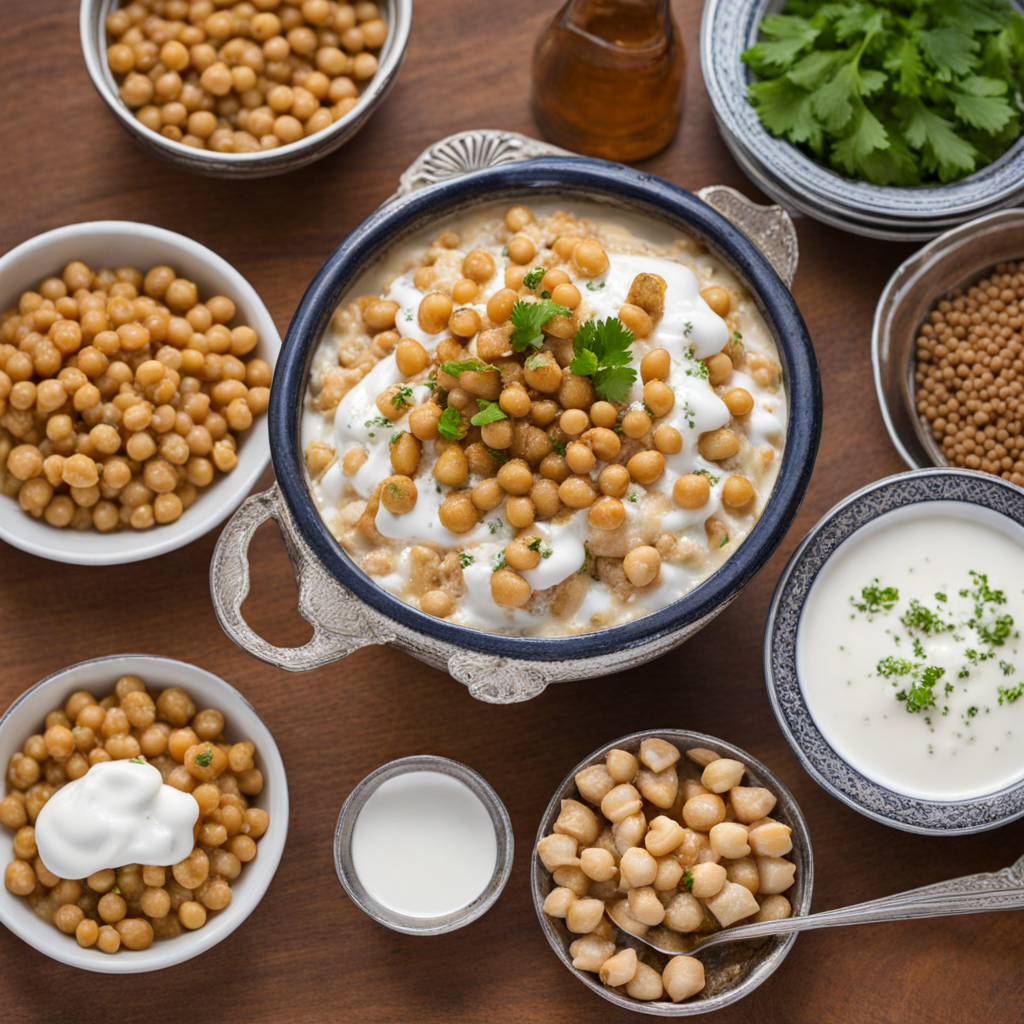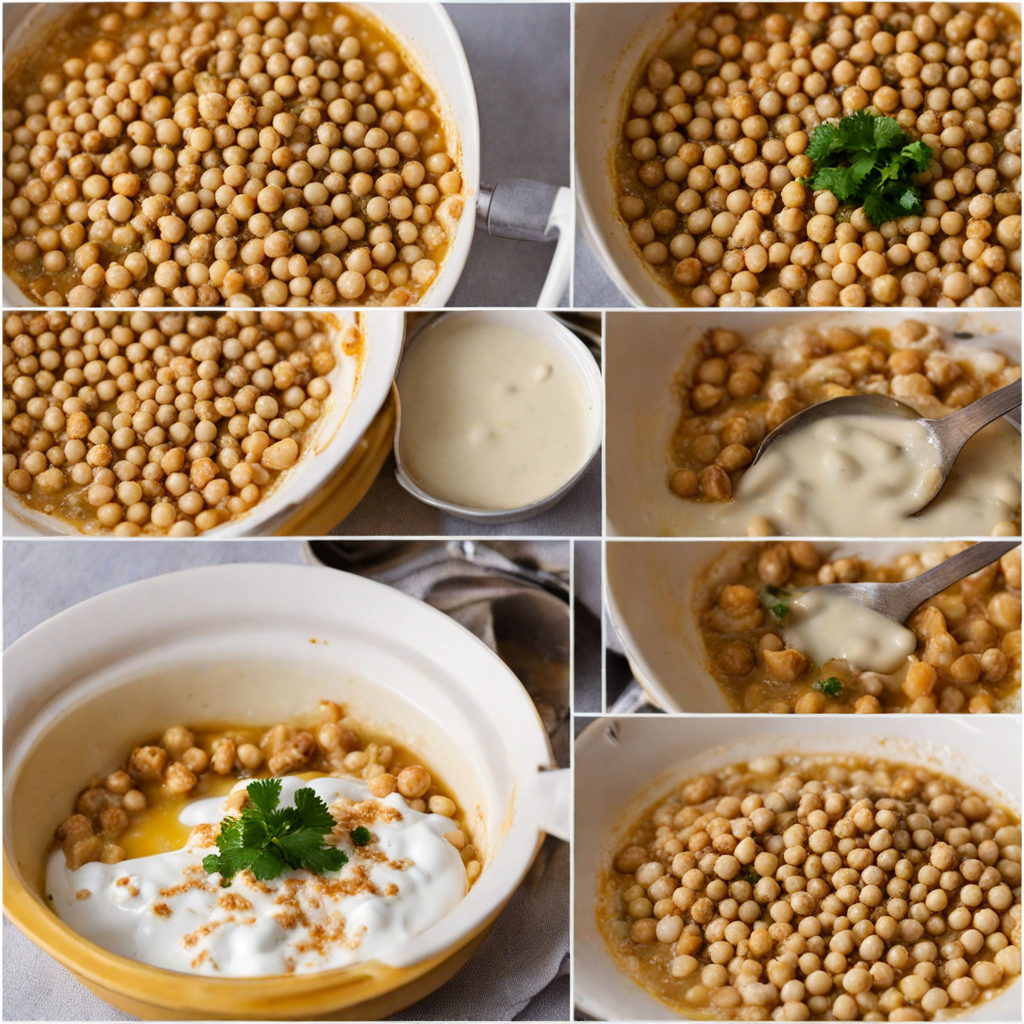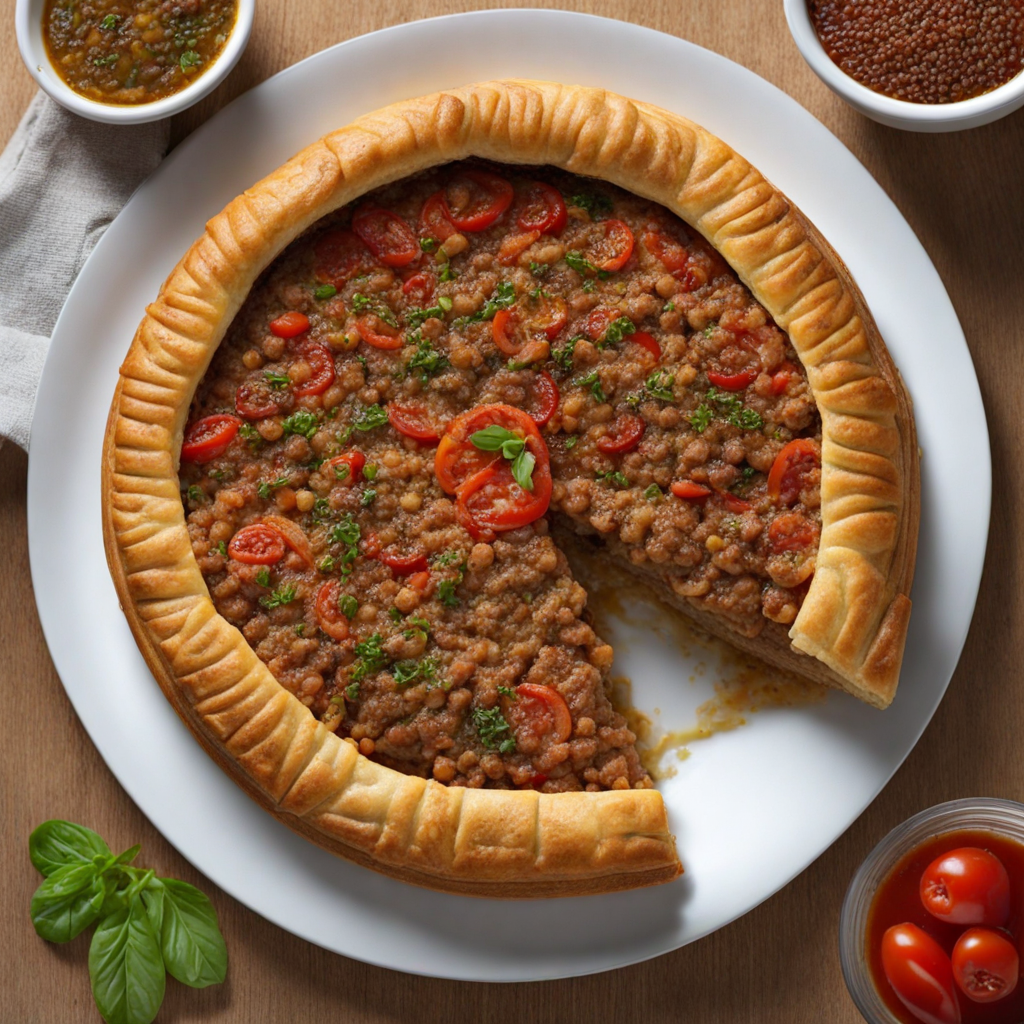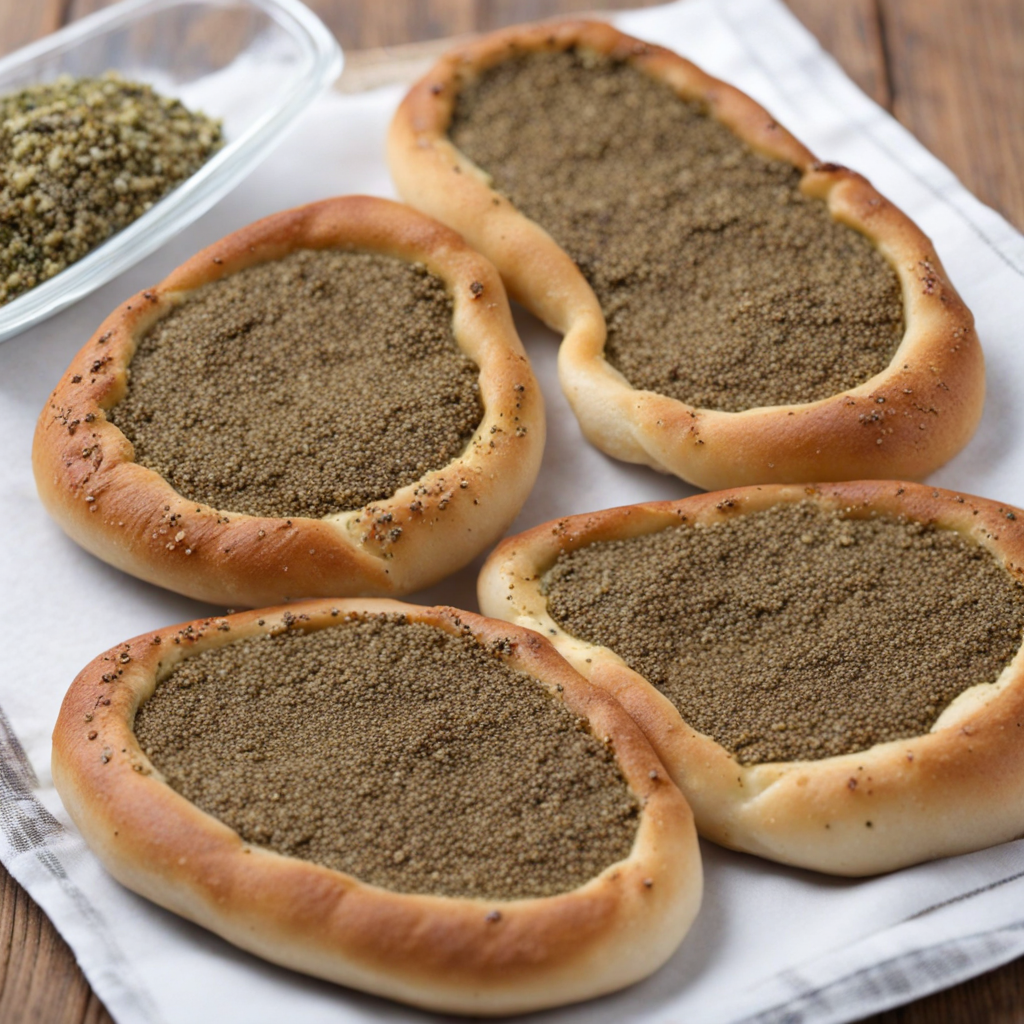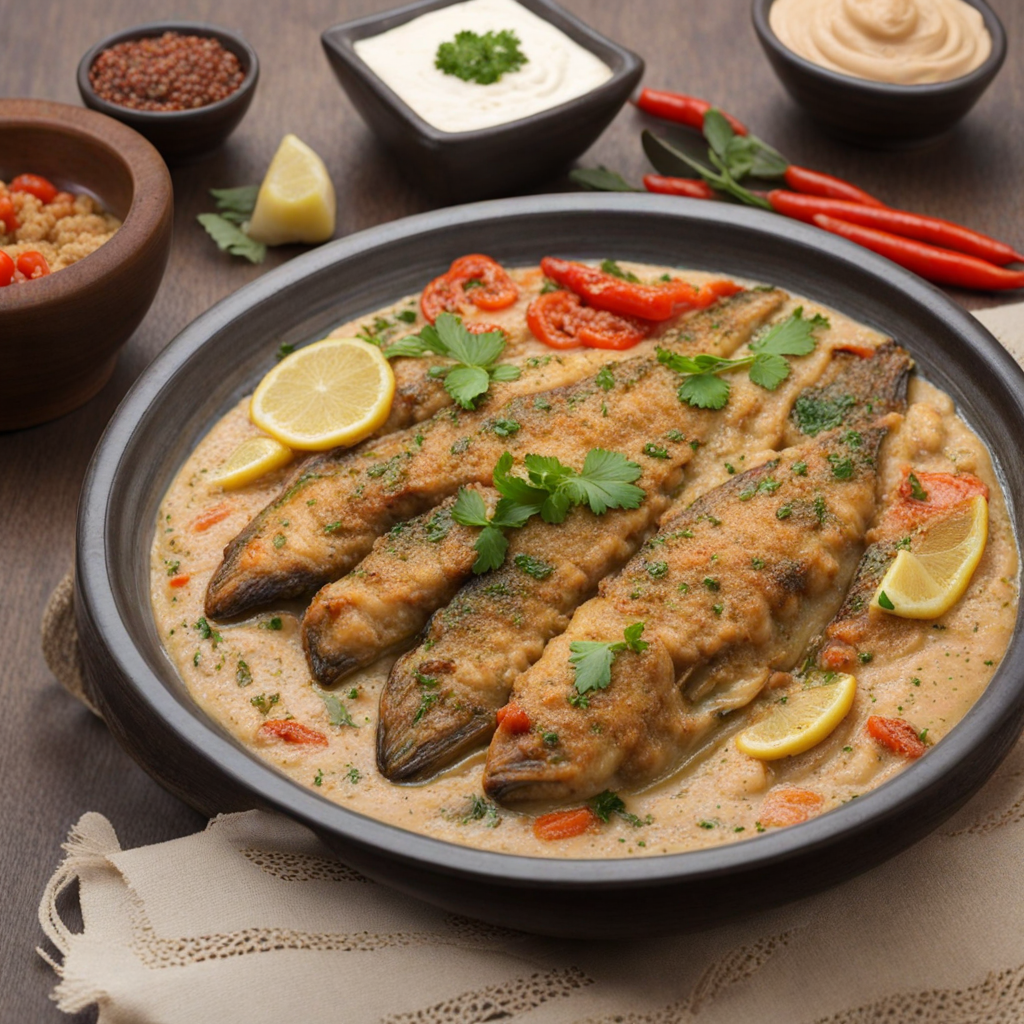Fatteh
Fatteh is a delightful Lebanese dish that beautifully showcases layers of flavors and textures, making it a true feast for the senses. At its core, Fatteh consists of crispy pieces of pita bread that serve as the foundation. The bread is typically toasted or fried to achieve a satisfying crunch, creating a delightful contrast against the other softer components. This base is then generously topped with a combination of cooked chickpeas, which add a hearty element, and a rich, creamy yogurt sauce that brings a cooling balance to the dish. The yogurt is often seasoned with garlic and salt, infusing each bite with a tangy zest that complements the other ingredients perfectly. What truly sets Fatteh apart is its versatility and the myriad of regional variations. In Lebanon, you might encounter Fatteh adorned with fragrant spices like cumin and paprika, which elevate the flavors to new heights. Additionally, some versions incorporate tender pieces of meat, such as lamb or chicken, simmered in spices, adding a satisfying depth to the dish. The finishing touch often includes a sprinkle of pine nuts or toasted almonds, providing a nutty crunch and enhancing the overall presentation, making it visually appealing as well as delicious. Fatteh is more than just a meal; it’s an experience that invites communal sharing, often served in a large platter for family and friends to enjoy together. The interplay of warm and cold, crunchy and creamy, alongside the aromatic spices, creates a harmony that embodies the essence of Lebanese cuisine. Whether enjoyed as a hearty breakfast, a substantial lunch, or a comforting dinner, Fatteh offers a captivating taste of Lebanon that is sure to leave a lasting impression on any food lover.
How It Became This Dish
Origin of فتة The dish known as فتة (Fattah) has its roots deep within the culinary traditions of the Levant region, particularly in Lebanon, where it has become synonymous with both comfort food and celebratory meals. Its etymology traces back to the Arabic word “فَتَحَ” (fataha), which means “to break” or “to slice,” reflecting the dish's foundational ingredient of broken pieces of bread. The inception of فته can be linked to the resourceful practices of ancient communities, who sought ways to repurpose leftover bread, demonstrating a profound understanding of sustainability in food culture. Cultural Significance In Lebanese culture, فته transcends mere sustenance; it embodies hospitality and community. Traditionally served during family gatherings, religious holidays, and festive occasions, فته is more than just a meal; it is a symbol of togetherness. The dish often appears during Ramadan, where families break their fast with a warm, hearty serving of فته, marking the end of their day with a blend of flavors and textures that comfort the soul. The preparation of فته varies significantly across households, regions, and occasions, but its essence remains unchanged. The dish usually comprises layers of torn or broken pieces of bread soaked in broth, often accompanied by meat, chickpeas, and a variety of spices. The versatility of فته allows it to be tailored to local tastes and available ingredients, making it a staple in Lebanese kitchens. Development Over Time Historically, the evolution of فته can be traced through various phases that highlight the intersection of culinary practices and socio-economic changes. In the Ottoman period, the dish gained further prominence, as the empire's vast geography allowed for the exchange of culinary techniques and ingredients. Fattah began to incorporate elements from neighboring cultures, leading to different variations that showcased regional ingredients, such as yogurt, garlic, and various spices. In modern times, فته has adapted to the contemporary palate while retaining its traditional roots. The introduction of new cooking methods and a focus on health-conscious ingredients have led to lighter versions of the dish. For instance, some recipes now utilize whole-grain bread and emphasize plant-based components, reflecting a growing trend towards healthier eating habits in Lebanon and beyond. Regional Variations The beauty of فته lies in its regional variations that showcase the rich culinary tapestry of Lebanon. The most famous variant is the فته باللحمة (Fattah bil Lahme), which is made with a spiced meat broth, typically lamb or beef, and garnished with fried pine nuts and chopped parsley. This version is often served during holidays and special occasions, highlighting the celebratory nature of the dish. Another notable variation is فته بالحمص (Fattah bil Hummus), which focuses on chickpeas, combining them with tahini and spices to create a creamy, flavorful topping over the bread. This adaptation reflects the Lebanese love for chickpeas, a staple ingredient that features prominently in their cuisine. Additionally, some regions have developed their own unique twists, incorporating local herbs and spices that elevate the dish's flavor profile. Modern Interpretations As globalization influences culinary practices, فته has found its way onto menus in restaurants far beyond Lebanon. Chefs have embraced the dish, offering modern interpretations that appeal to a wider audience while maintaining its traditional essence. Fusion cuisine has led to innovative takes, such as incorporating international ingredients or presenting فته in a deconstructed manner. At the same time, the rise of food tourism has introduced the dish to a broader audience, with travelers seeking authentic Lebanese dining experiences. This exposure has reignited interest in traditional recipes, with many food enthusiasts eager to learn the art of preparing فته. Cooking classes and workshops focusing on Lebanese cuisine frequently highlight فته, teaching participants the significance of each ingredient and the stories behind this beloved dish. Conclusion The journey of فته reflects the rich and diverse history of Lebanon itself. It is a dish that embodies the spirit of resilience, creativity, and community, evolving through time while still holding onto its roots. Today, فته continues to be a beloved dish not only in Lebanon but also across the globe, serving as a delicious reminder of the country’s culinary heritage and the importance of food as a cultural connector. Whether enjoyed at a family gathering or in a trendy restaurant, فته remains a testament to the enduring legacy of Lebanese cuisine.
You may like
Discover local flavors from Lebanon


